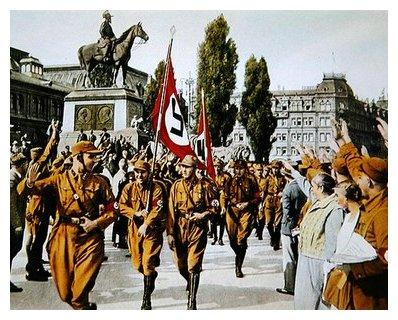The first Nazi actions
As a girl, Helga was attracted more to her father’s outlook than her mother’s which she found less meaningful. Her father prevailed on the question of schooling, and Helga was educated at the Theodor Herzl School, a liberal institution named for the founder of the Zionist movement.
The first physical actions against the Jews came in February and March 1933 with SA raids in Scheunenviertel. Anti-Jewish signage was unfurled in the city’s market halls. The Nazi Party called for a boycott of jewish shops and department stores. On April 1, the boycott began with street demonstrations. Over the following months, crackdowns on Jewish professionals, civil servants and academics would culminate in public book burnings. These measures hit other Jewish sectors hard but early attempts to shut Jews out of the city’s commercial markets were more difficult to implement.
Years later, Helga recalled watching from their apartment balcony as Brownshirts paraded past on Goethestrasse. They shouted ‘Heil Hitler’ with their arms outstretched. She also experienced the impacts in education, where there were new restrictions at every level from kindergarten to university. Public primary and secondary schools raised costs and set quotas on Jews, driving students into Jewish schools such as Theodor Herzl, where enrollment swelled in 1934 and subsequent years. By the end of 1937, there were just 2000 Jewish children in Berlin public schools, down from 13,000 in 1933

